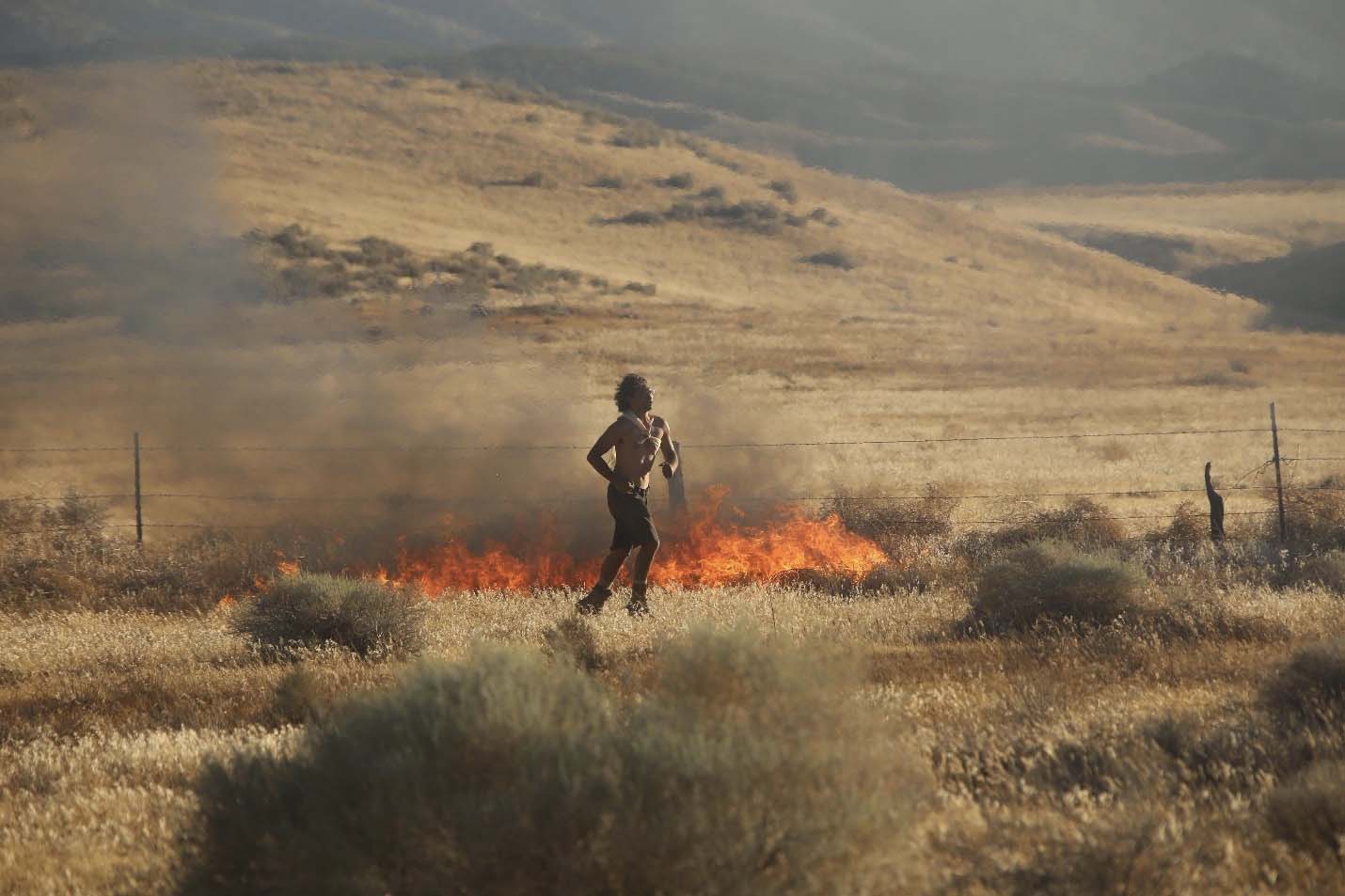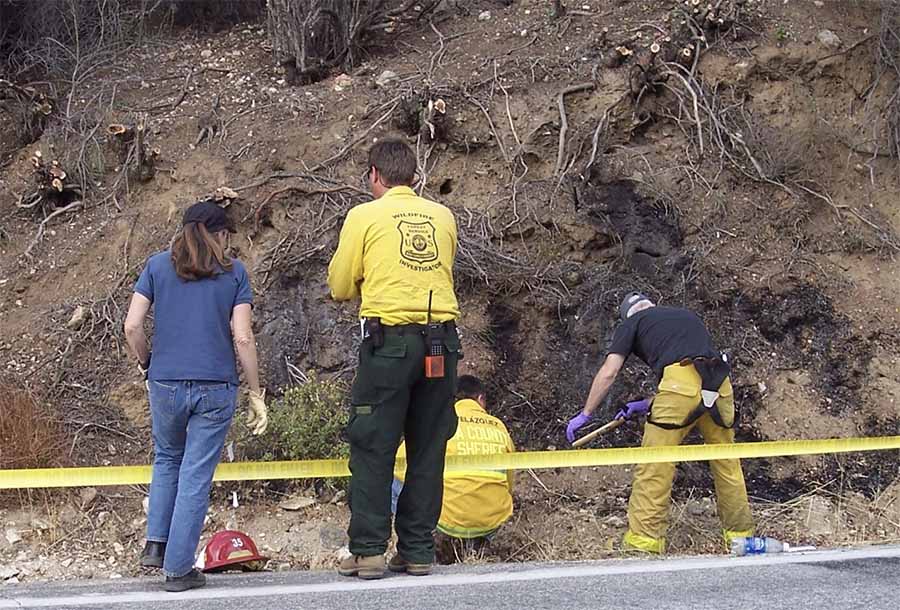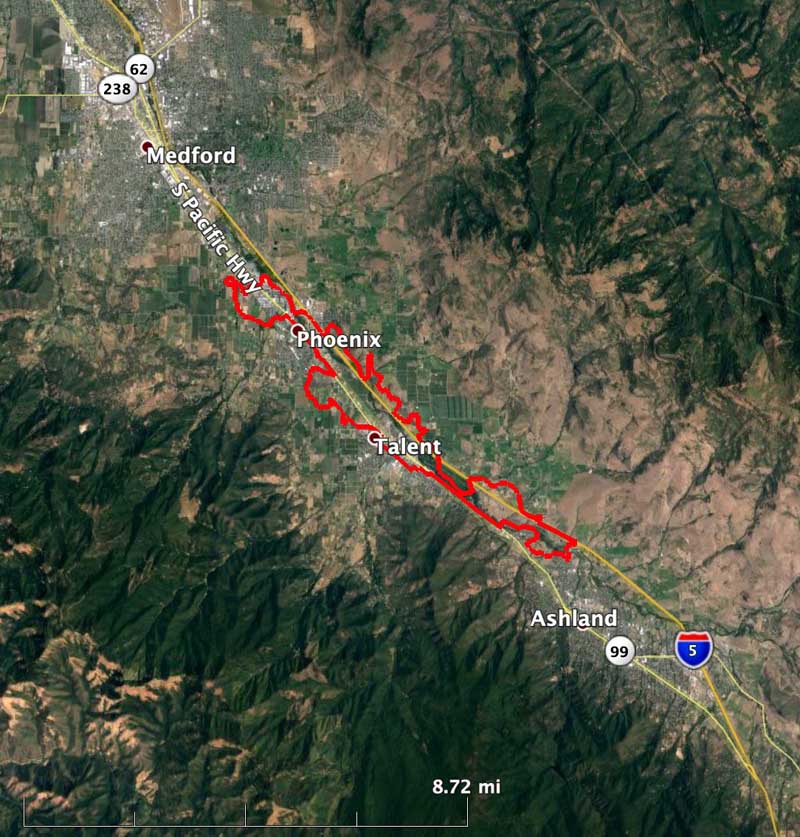
By Joe Konefal and Ed Nordskog
The one criminal who possesses the power of a nuclear weapon at his fingertips is the wildland arsonist. In certain areas of the world, if the weather and fuel conditions are favorable, a wildland arsonist has the instant ability to burn an entire community to the ground, and kill scores of people, their pets, livestock, and the wildlife in the area. All of this carnage for the mere price of a match, a lighter or a road flare.
The good news is that there aren’t that many people intentionally setting arson fires in the wildlands, as yearly statistics prove that the overwhelming number of wildfires are not acts of arson. The less good news is that historically, many of the actual wildland arson cases go “unsolved”. The reasons for this are many, but one important reason is that compared to their urban counterparts, wildland arson investigators working for public agencies get very little money for resources and investigative training. Wildland arson cases have two distinct phases; the scene work, and then the follow-up criminal investigation. Many wildland investigators have a high degree of skill when conducting the “Origin and Cause” investigation at the scene, but they often lack the years of experience and ongoing certified training to pursue the criminal investigation portion of the case. There are currently very few schools, books, or online sources out there dedicated specifically toward conducting an arson investigation in the wildlands.
That’s too bad. Analysis of case histories shows that a significant portion of wildland arsons are committed by a small number of persons…the serial arsonists. The majority of arson series are eventually solved, provided that the arsonist continues setting fires. It is not unusual for investigators to learn that a single serial arsonist in the wildlands had set twenty to one hundred fires (or more) prior to the arrest.
Threat Assessment
Traditionally, the fire service (urban and wildland) rates arson fires by their damage (dollar loss) or their size in acreage. This may greatly affect how much attention, manpower, and resources are devoted to an investigation. But, to an investigator, the size of the fire has very little to do with assessing the threat level of an arsonist, as the size of the fire event is completely out of the hands of the arsonist. The below factors are much more important to consider when conducting any threat assessment during a wildland arson investigation of an unknown subject. These factors are important when considering the intent of the arsonist.
-Large number (more than three) of suspicious or arson fires in an area
-Rapid frequency of suspicious or arson fires in an area
-Arson fires purposely set in extreme fire conditions
-The use of an incendiary device by the arsonist
If any of these four factors are present, then even small fires or failed arson events (all serial arson cases have these) are to be considered high threat. If an investigator determines that an offender is high threat, then the investigator must take immediate steps to approach this investigation as a major case investigation, and employ an arson task force approach to the case.
It is well known among modern criminal investigators that if you dedicate enough resources on any case, you can probably solve it fairly quickly. The real issue is that public agencies seldom have the luxury to focus on any one case until it gets media attention. This causes “small” fires set by arsonists to be classified as a “nuisance”, and put on the back burner for weeks or months until the arsonist sets a much larger or more destructive fire.
Our position is that through training, and a proper threat assessment after every arson event, (small or large), investigators will more quickly focus resources on an emerging problem before the disastrous arson attack takes place.
Arson Task Force Approach and Investigative Mindset

This investigative mindset simply means treating the case as a major case from the beginning and using sufficient resources to solve the problem. A task force can be as few as three to four investigators, or up to hundreds of investigators and support personnel. The key to every task force is simple: Bring the right people to the team, not the most.
Continue reading “The wildland arsonist: one of the most dangerous criminals”






